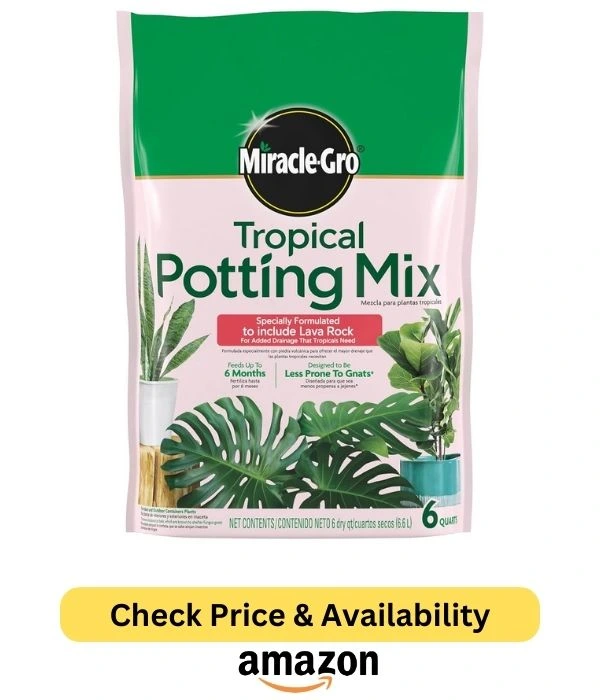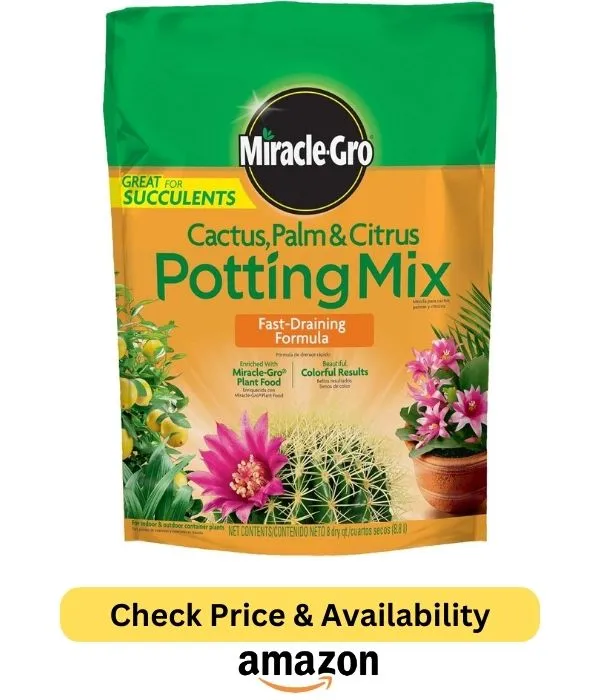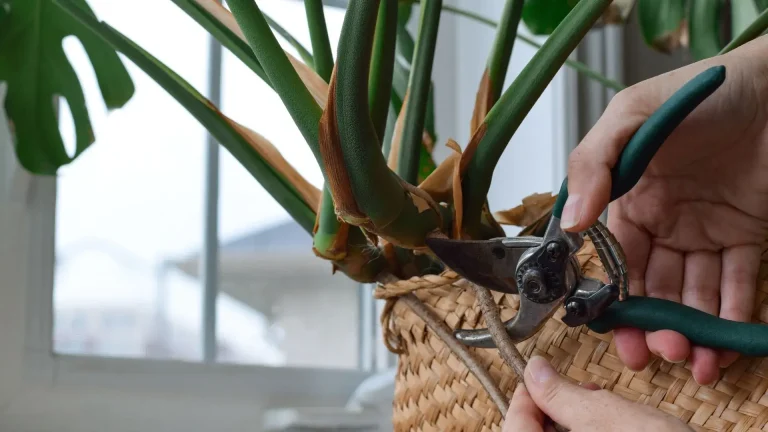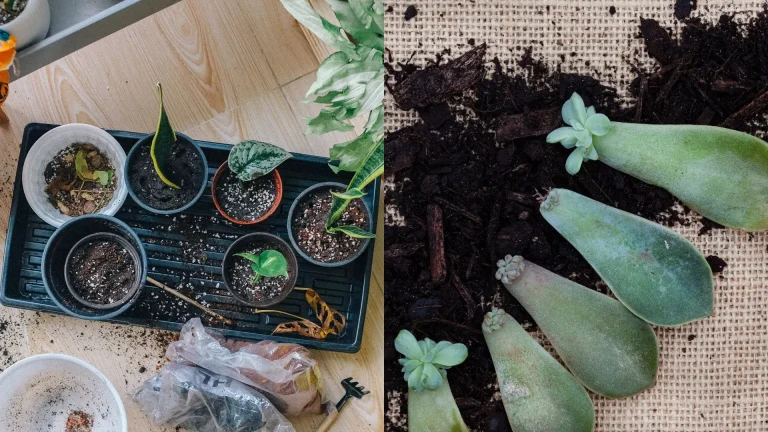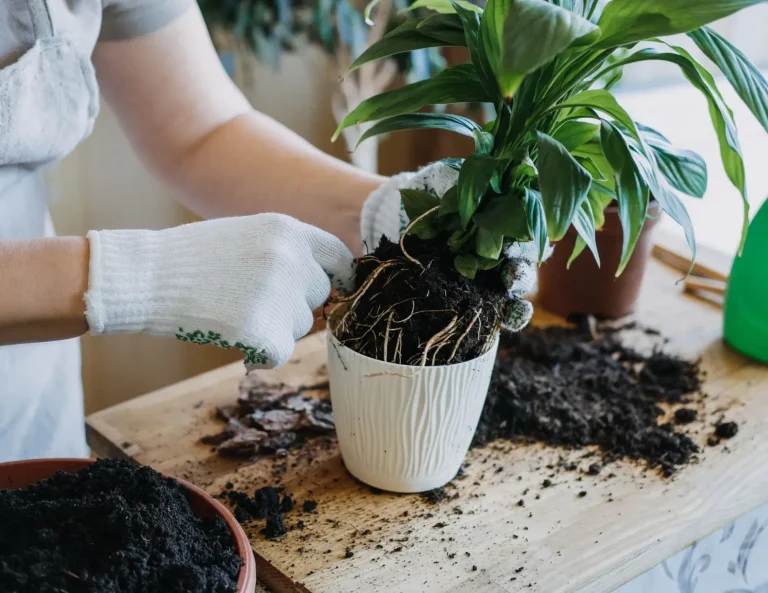Snake Plant Care Guide: A Complete Guide for Beginners
The snake plant (Sansevieria, now classified under the Dracaena genus) is a favorite among houseplant enthusiasts, known by nicknames like “Mother-in-Law’s Tongue,” it features upright, sword-like leaves that come in various shades of green, often adorned with vibrant yellow or silver markings. Its hardy nature and adaptability make it one of the easiest plants to care for, even for beginners.
Native to West Africa, snake plants thrive in arid regions with low rainfall and high temperatures. They’ve adapted to store water in their thick, fleshy leaves, allowing them to survive in dry conditions. Understanding their origins helps explain why they prefer well-draining soil, infrequent watering, and bright light.
Table of Contents
Snake Plant Quick Care Guide
| Scientific Name | Dracaena trifasciata (formerly Sansevieria) |
| Common Names | Snake Plant, Mother-in-Law’s Tongue, Viper’s Bowstring Hemp |
| Light | Prefers bright, indirect light. Can tolerate low light but avoid prolonged direct sunlight. |
| Watering | Allow the soil to dry out completely between waterings. Water every 2–6 weeks depending on the season. |
| Soil | Use well-draining soil, such as a cactus or succulent mix, to prevent water retention. |
| Potting | Use pots with drainage holes. Repot every 2–3 years or when root-bound. |
| Temperature | Ideal range: 70–90°F (21–32°C). Avoid temperatures below 50°F (10°C). |
| Humidity | Thrives in average household humidity. Does not require additional humidity. |
| Fertilization | Feed once a month during spring and summer with a balanced fertilizer diluted to half strength. |
| Pruning | Trim dead or yellowing leaves at the base using clean, sharp scissors. |
| Propagation | Propagate through division, leaf cuttings, or water propagation. |
| Pests and Problems | Watch for spider mites, mealybugs, and scale. Treat with neem oil or insecticidal soap. |
| Toxicity | Mildly toxic to pets and humans if ingested. Keep out of reach of children and animals. |
Light Requirements
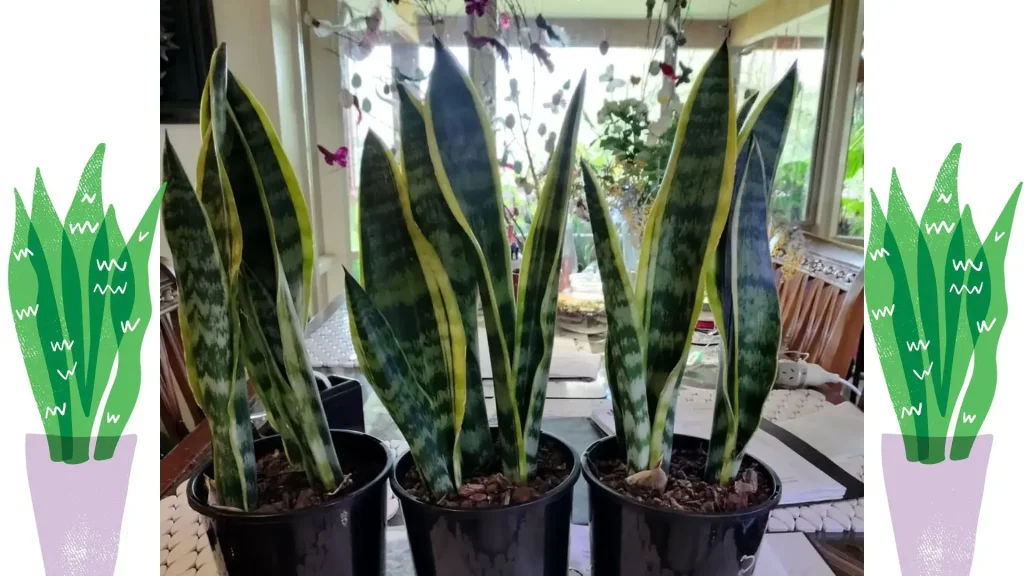
Snake plants grow best in bright, indirect light. A spot near an east- or west-facing window where they receive filtered sunlight is ideal. This lighting promotes vibrant growth and enhances the plant’s natural coloration.
One of the snake plant’s most appealing qualities is its ability to adapt to low-light environments. While growth may slow, the plant will still survive in dim corners, making it a versatile choice for spaces with limited natural light, such as offices or bathrooms.
Prolonged exposure to intense, direct sunlight can scorch the leaves, causing unsightly brown patches or fading. If placing your snake plant near a south-facing window, use a sheer curtain to diffuse the light and protect the foliage.
Watering Guidelines
Snake plants are drought-tolerant and prefer infrequent watering. Allow the soil to dry out completely between waterings, typically every 2–6 weeks depending on the environment. Water more often during the active growing seasons (spring and summer) and less during dormancy (fall and winter).
Seasonal Adjustments
- Spring and Summer: Increase watering slightly as the plant enters its growth phase.
- Fall and Winter: Reduce watering to avoid waterlogged soil during the plant’s dormant phase.
Signs of Overwatering and Underwatering
- Overwatering: Yellowing leaves, mushy stems, or foul-smelling soil indicate waterlogged roots and potential root rot.
- Underwatering: Wrinkled, dry, or curling leaves suggest the plant needs more water.
Soil and Potting
Snake plants thrive in well-draining soil. A cactus or succulent mix is ideal as it prevents water retention, reducing the risk of root rot. You can also create your own mix by combining regular potting soil with sand or perlite.
Pot Selection
Always use a pot with drainage holes to allow excess water to escape. Terracotta pots are a great option as they absorb moisture and help prevent overwatering. Choose a pot size that provides room for growth without being too large.
Repotting Frequency
Repot snake plants every 2–3 years or when they outgrow their pots. Signs it’s time to repot include roots emerging from the drainage holes or a plant that looks top-heavy. Spring is the best time to repot, as the plant is entering its active growth phase.
Temperature and Humidity
Snake plants prefer temperatures between 70–90°F (21–32°C). They can tolerate slightly cooler conditions but should not be exposed to temperatures below 50°F (10°C).
Snake plants thrive in average household humidity levels. Unlike tropical plants, they prefer dry conditions and do not require additional humidity.
Protect your snake plant from cold drafts near windows, doors, or air conditioners. Sudden temperature changes can stress the plant, causing leaf discoloration or wilting.
Fertilization
Snake plants don’t require heavy feeding, but occasional fertilization can boost their growth and keep them healthy. Use a balanced, water-soluble fertilizer (e.g., 10-10-10) or one specifically designed for houseplants. Organic options, such as compost tea or worm castings, also work well.
Fertilization Schedule
- Spring and Summer: Feed your snake plant once a month during its active growing period. Dilute the fertilizer to half the recommended strength to avoid overfeeding.
- Fall and Winter: Avoid fertilizing during the plant’s dormant phase, as it won’t absorb nutrients efficiently.
Pruning and Maintenance
Prune yellowing, browning, or damaged leaves at the base to encourage healthy growth and maintain the plant’s appearance. Use sharp, clean scissors or pruning shears to make clean cuts and reduce the risk of infection.
Dust buildup on leaves can hinder photosynthesis. Wipe the leaves with a damp cloth every few weeks to keep them clean and shiny. Avoid using leaf shine products, as they can clog pores.
Propagation Methods
Division
The easiest way to propagate a snake plant is by dividing its root rhizomes during repotting.
- How to Divide: Gently separate the plant into smaller sections, ensuring each has roots and a healthy leaf cluster. Repot each division into its own container.
Leaf Cuttings
Propagating from leaf cuttings is another option:
- Cut a healthy leaf into 3–4 inch sections.
- Allow the cuttings to dry for 1–2 days to form calluses.
- Place the cuttings upright in well-draining soil or water until roots develop.
Water Propagation
Place a leaf cutting in a jar of water with the base submerged. Change the water weekly, and once roots are 1–2 inches long, transfer the cutting to soil.
Common Pests and Problems
Pest Identification and Treatment
- Common Pests: Spider mites, mealybugs, and scale are the most frequent pests affecting snake plants.
- Treatment: Use neem oil, insecticidal soap, or a cotton swab dipped in rubbing alcohol to remove pests.
Disease Prevention
- Root Rot: Caused by overwatering or poor drainage. Prevent it by using well-draining soil and allowing the soil to dry out between waterings.
- Leaf Spot: Often caused by fungal infections from excess moisture. Avoid overhead watering and improve airflow around the plant.
Addressing Drooping Leaves
Drooping leaves can be a sign of overwatering, underwatering, or insufficient light. Adjust your care routine accordingly.
Toxicity Warning
Snake plants are mildly toxic to pets and humans if ingested. Symptoms may include nausea, vomiting, or irritation. Keep the plant out of reach of children and curious pets to ensure safety.
Final Thoughts
Snake plants are the ultimate low-maintenance houseplant, perfect for beginners and experienced plant enthusiasts alike. By following these simple care guidelines, you can enjoy their beauty, air-purifying benefits, and resilience for years to come.


